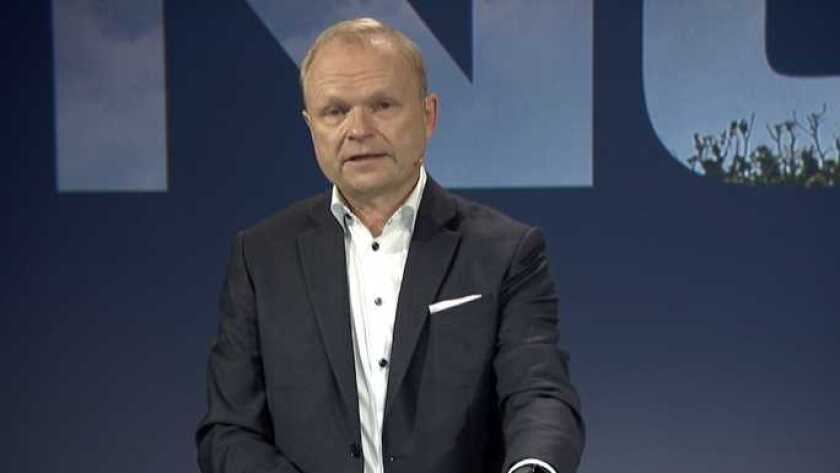Nokia’s year on year sales fell 15% year-on-year for Q3 2023, excluding currency fluctuations.
Lundmark said Nokia’s announcements will allow to it take “decisive action on 3 levels; strategic, operational, and cost”.
The announcement that has made the most headlines is its plans to cut between 9,000 and 14,000 jobs as part of a plan to reduce costs by up to 1.2 billion euros by 2026.
A new operating structure that would see sales teams integrated into the four business units Nokia created in 2021 and a leaner corporate centre that would oversee functions such as finance and long term research via Bell labs was announced.
This restructure, Lundmark said, would reduce Nokia’s overall headcount from 86,000 at present to between 72,000 and 77,000.
Lundmark said the changes would grant the four business groups with increased operational autonomy and agility, which would allow them to better address the opportunities in their respective markets.
Specifically, Lundmark wants to see the four business units further diversify beyond service providers, implement new business partnerships and invest in technology leadership.
Previously, the sales function had been a central team that supported each business unit.
While Lundmark did not specify which departments would see job cuts, he did say he wanted to protect research and development within Nokia, indicating that the reductions in staff are likely to be within the sales and central functions roles.
Lundmark also said Nokia would execute quickly on the cost-saving program, expecting a 400 million euro reduction in costs in 2024.
Nokia are predominantly blaming the wider macro-economic environment and higher interest rates for their financial troubles, alongside customers using the inventory they have already bought from Nokia and its kit vendor competitors.
Nokia’s mobile network business unit was down 19% year-on-year in the quarter, with Lundmark explaining that “this was primarily driven by inventory depletion and MNOs prioritising cash over capex”.
Despite the challenging economic environment making a recovery in sales “hard to predict” Lundmark said that the cost saving actions would keep Nokia on track for 14% operating margin by 2026.
Despite the 15% fall in sales in Q3 2023, operating margin only fell 8.5%, a result of continued cost control and revenue from other operating income.
The network infrastructure business was still impacted by the macroeconomic environment and inventory depletion which led to a 14% decline in year-on-year net sales. IP Networks and Fixed networks received special attention from Lundmark, who said spending from operators in these categories were specifically impacted.
A slowdown in growth in India, which had been propping up Nokia’s mobile network business, meant that the region was no longer able to offset the considerable slowdown in the US, its biggest market.
Cloud and network services proved more robust in the quarter with a 2% decline and continued to benefit from strong growth in the enterprise solutions business, which were up 5% and now represent 10% of group sales.
Despite the weak performance, Lundmark said that market signals indicated the business was still in a strong place.
The increased use of AI and cloud computing applications require significant network investment, which Nokia should be able to capitalise on. Furthermore, Lundmark said that 5G network deployment was only around 25% complete, excluding China.
The network infrastructure business should also benefit from the 2024 rollout of rural broadband initiatives, Lundmark said.






